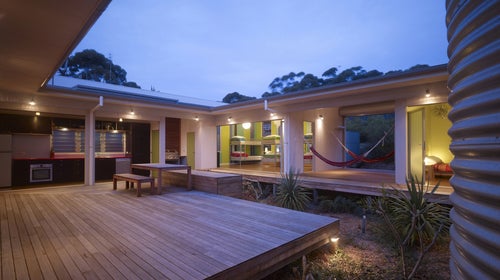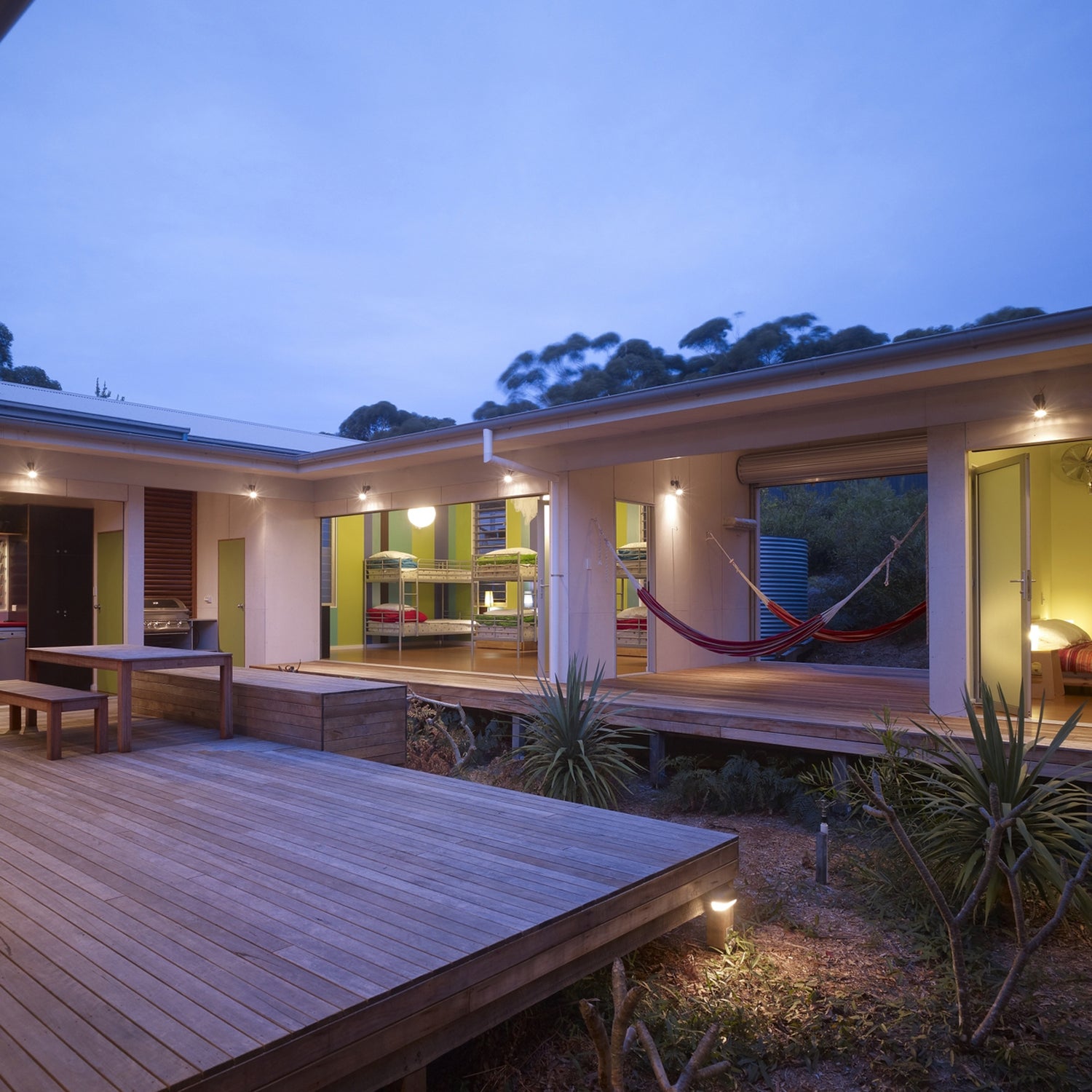We’re a country obsessed with privacy—. But that doesn’t mean you have to shut yourself in a bunker whenever you go on vacation.
On Seal Rocks Beach in New South Wales, to create a private, inner courtyard. It won’t shield you from NSA drones, but it will afford you relief from neighbor’s prying eyes.
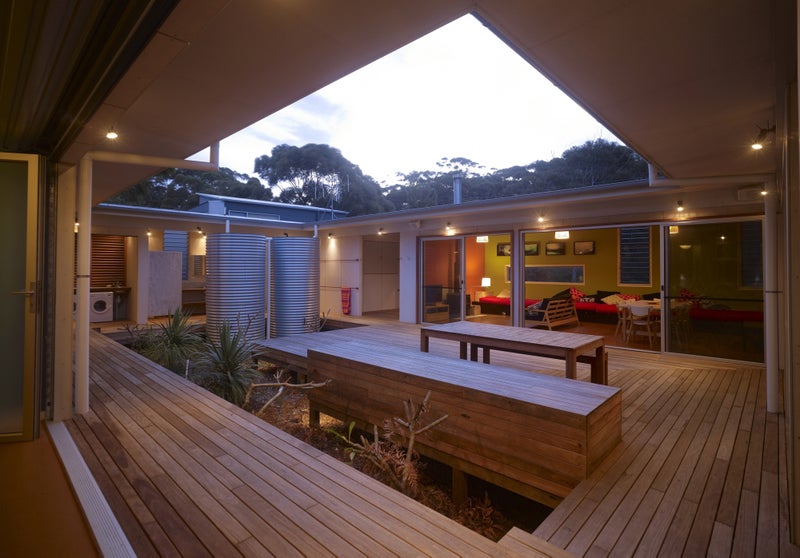
The home’s open entrance is shaded. Leave your surfboard and wetsuit here before settling into one of the many hammocks. There’s a living area, shower, and bathroom tucked under the eave, while a big bunkroom, two bedrooms, and the entryway make up one long side of the rectangle. There’s also a galley kitchen across from the bath. Minimal exterior windows shutter the house completely from the outside.
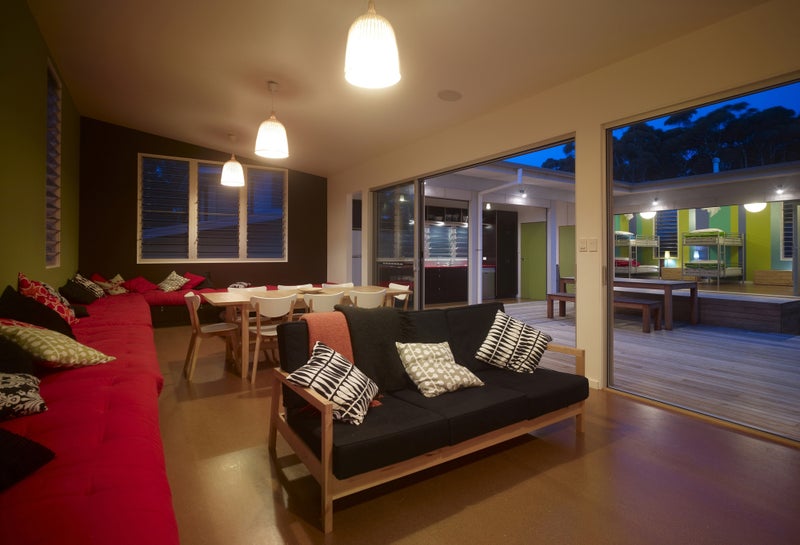
This cabin is nearly 100 percent self-sufficient, with solar panels, rainwater catchment, and a composting worm farm to treat sewage. Basic materials and construction techniques were used to reduce cost, prevent corrosion, and take advantage of local resources.
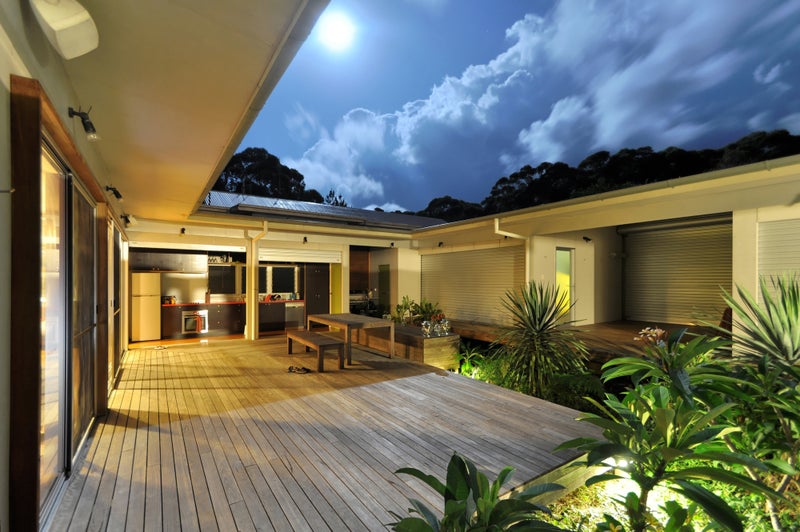
A sanctuary like this isn’t inexpensive: the New South Wales cottage cost $300,000 to build. You’ll have to decide for yourself whether your privacy is worth it.
